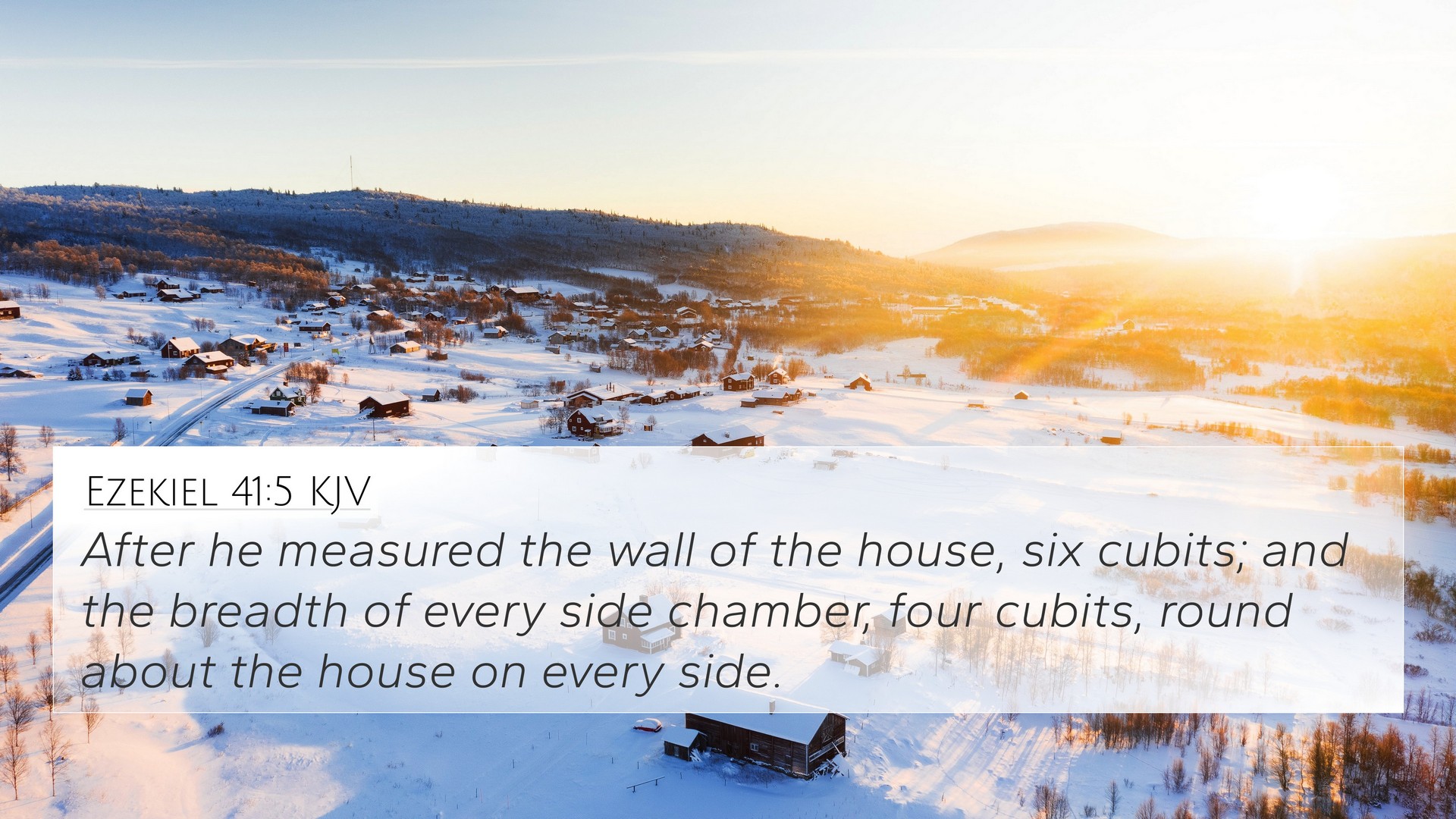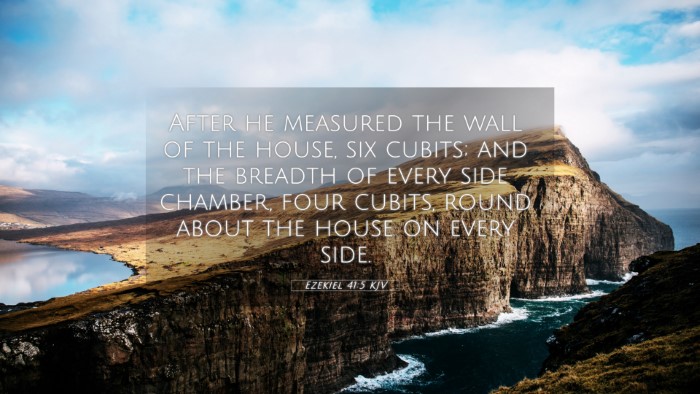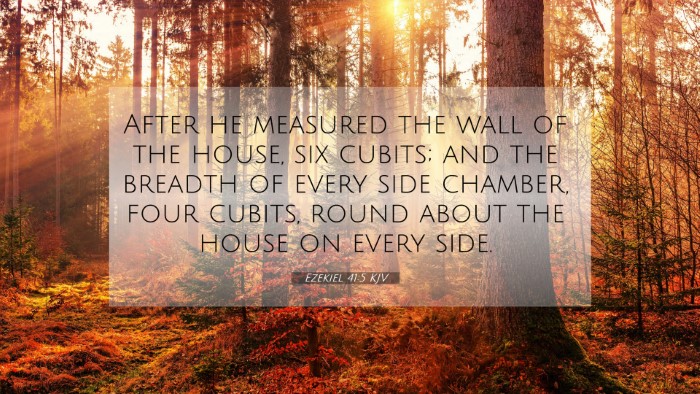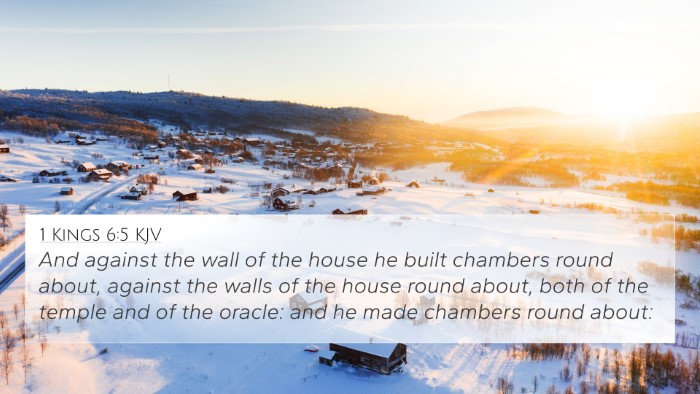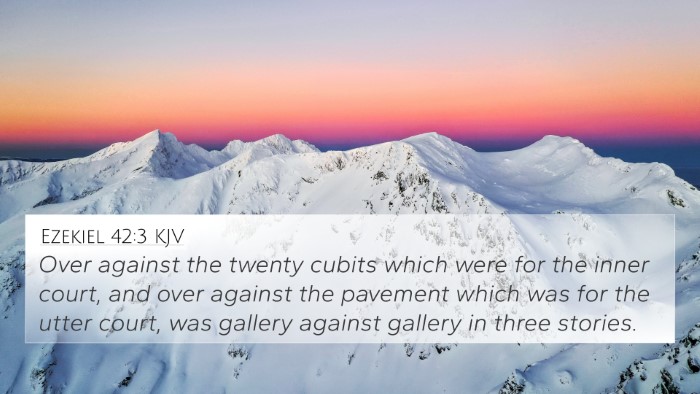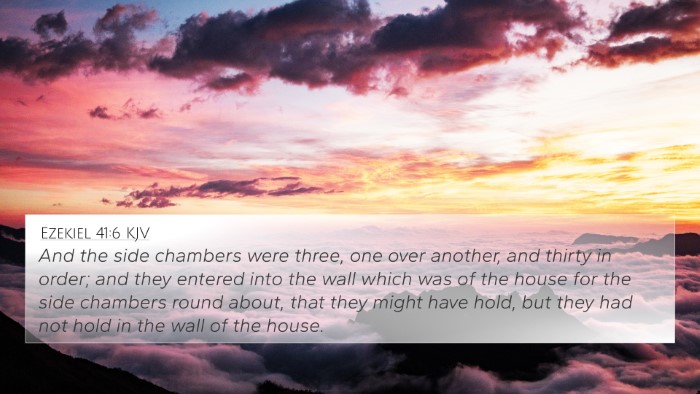Ezekiel 41:5 Explained
Verse Reference: Ezekiel 41:5 - "Afterward he measured the length of the building, over against the separate place which was behind it, and the galleries were on the one side and on the other side. It was the twenty cubits long and twenty cubits wide." (KJV)
Summary of Meaning
The verse Ezekiel 41:5 presents an architectural measurement of the temple, revealing details important for the understanding of the temple's design and spiritual significance. This measurement emphasizes the importance of the tabernacle and temple in Jewish worship and God's presence among His people.
Commentary Insights
-
Matthew Henry:
Henry elucidates the significance of precise measurements in Ezekiel’s vision as a reflection of God's order and holiness. The details of the temple emphasize that God is a God of order and not of chaos. It also symbolizes the separation between the sacred and secular, with the galleries indicating places for worship and observance.
-
Albert Barnes:
Barnes notes the architectural features as illustrative of God's presence among His people and highlights how this vision was likely meant to comfort the exiled Israelites by presenting an ideal of worship and community. His focus on the galleries emphasizes inclusivity within worship while maintaining the separate sanctuaries for the holy.
-
Adam Clarke:
Clarke adds a historical context, enquiring about the relevance of this design during Ezekiel’s time and its implications for future temple worship, concerning both the Jewish diaspora and potential restoration of Judah. He relates the dimensions to the divine perfection and the hope of restoration post-exile.
Inter-Biblical Connections
The architecture of the temple and its measurements invite comparisons with other biblical passages. Below are cross-references to consider:
- 1 Kings 6:2: Similar descriptions of Solomon's temple emphasizing size and grandeur.
- Revelation 21:15: A vision of the New Jerusalem's dimensions highlighting God's future dwelling place.
- Isaiah 66:1: Discusses the Lord's dwelling place and how heaven is His throne while the earth is His footstool.
- Exodus 25:9: Instructions on making the tabernacle and its components as per divine specifications.
- Jeremiah 29:11: The promise of restoration that aligns with Ezekiel’s vision of future worship.
- Hebrews 9:24: The heavenly temple as the superior reality compared to the earthly temple modeled in Ezekiel’s vision.
- 2 Chronicles 3:3: Describes the architectural specifics of Solomon’s temple, paralleling the dimensions given in Ezekiel.
Thematic Connections
The themes articulated in Ezekiel 41:5 resonate throughout the scriptures, particularly around the ideas of divine presence and worship. Here are some thematic connections:
- Divine Presence: The measurements emphasize the physical space where God meets with humanity.
- Restoration: Reflects God's promise to restore the Israelites both spiritually and physically.
- Holiness: Architectural details signify the sacredness of worship and separation from the common.
Tools for Further Study
To deepen understanding of this and related verses, consider the following tools and concepts:
- Bible concordance for exploring terminology related to temples.
- Bible cross-reference guide for identifying connections between different scriptural texts.
- Cross-reference Bible study methods for thematic resonances across verses.
- Bible reference resources to explore archaeological insights into temple structures.
- Bible chain references for thematic studies of restoration in both Old and New Testaments.
Conclusion
Understanding Ezekiel 41:5 is enhanced through comparative Bible verse analysis and linking biblical scriptures. The architectural details not only provide insights into the temple's physical structure but also symbolize deeper theological truths about God's desire to dwell among His people and the hope of future restoration.
